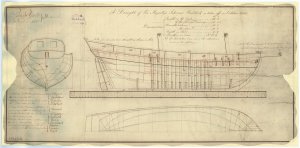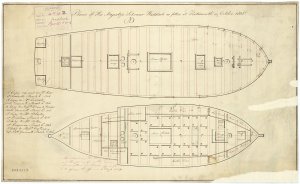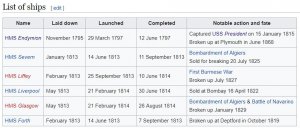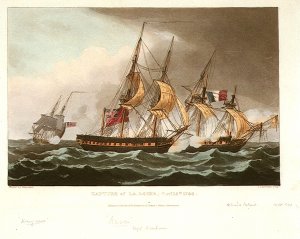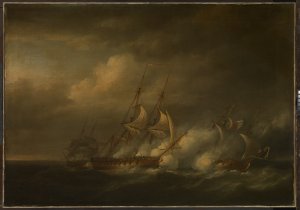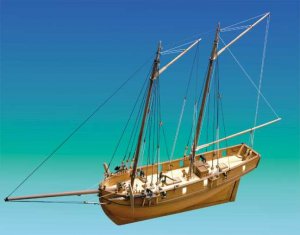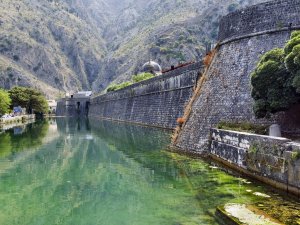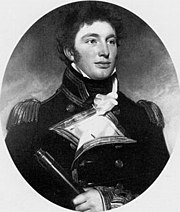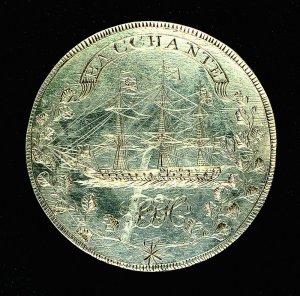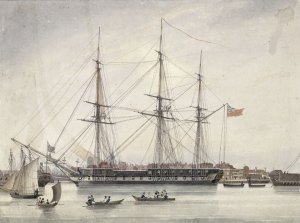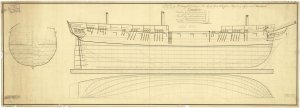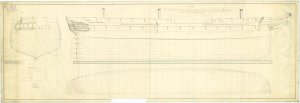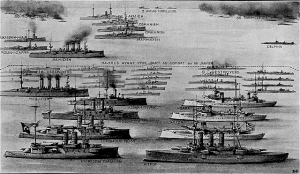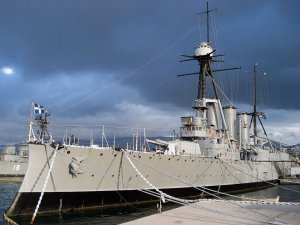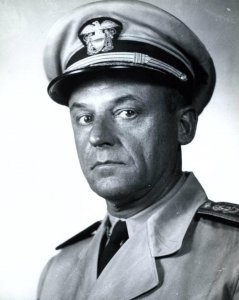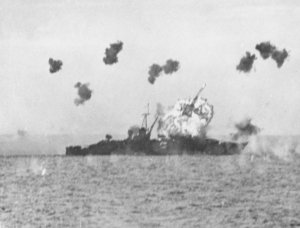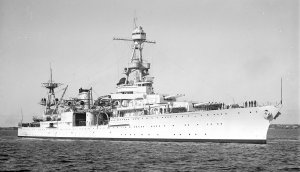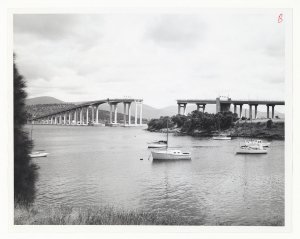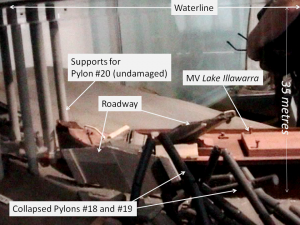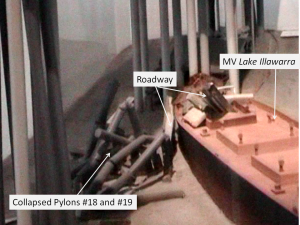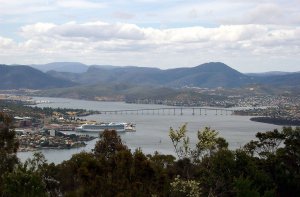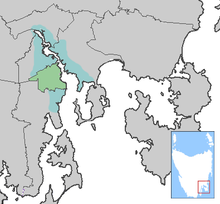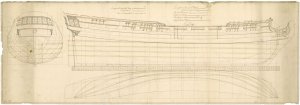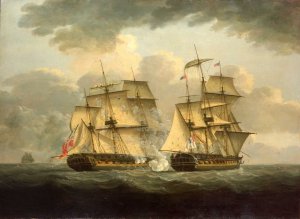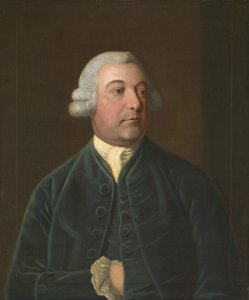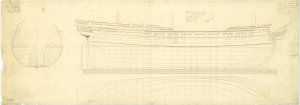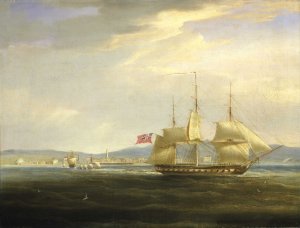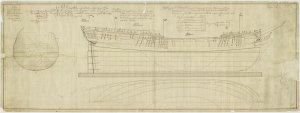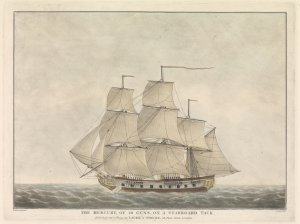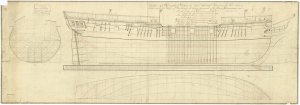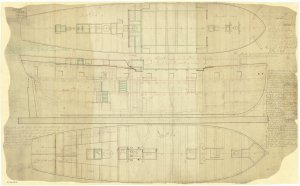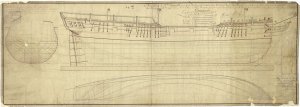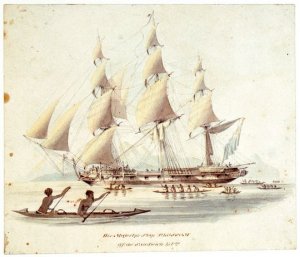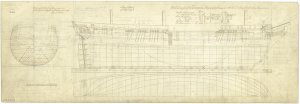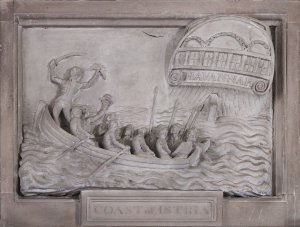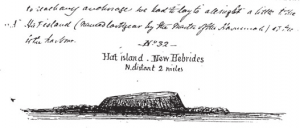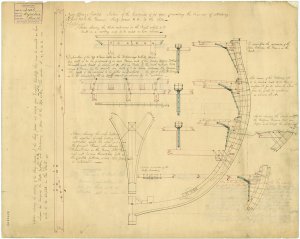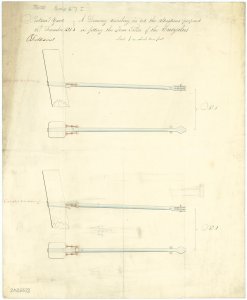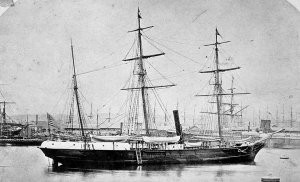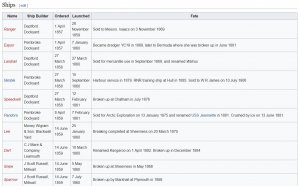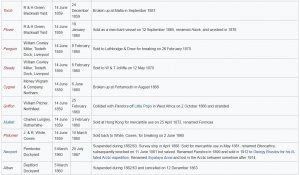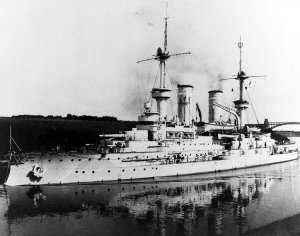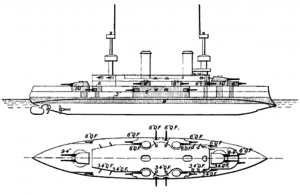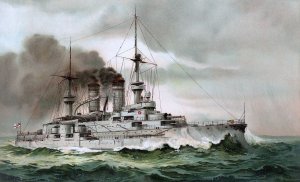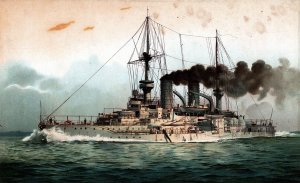Today in Naval History - Naval / Maritime Events in History
5 January 1798 - HMS Pomone (44), Cptn. Robert Carthew Reynolds, sank privateer Cheri (26), Cptn. Chassin, off Ushant
On 5 January, HMS Pomone was 94 leagues off Ushant when she encountered a large ship which she pursued. In the haze, the quarry underestimated Pomone's size and armament and opened fire. The two vessels exchanged several broadsides before the quarry struck. She was the French privateer Chéri, from Nantes, and was armed with a mix of twenty-six 12, 18 and 24-pounder guns. She had a crew of 230 men under the command of Mons. Chaffin. The engagement cost Pomone one man killed and four wounded, plus damage to masts and rigging. Chéri had 12 men killed and 22 wounded, and had lost her mizzen mast and all sails, and had taken several holes to her hull as well. Reynolds took her in tow and sent over his carpenter to plug the holes when she started to sink. He sent over Pomone's boats and they were able to get everyone off Chéri, including the wounded, before she sank.
Pomone was a 40-gun frigate of the French Navy, launched in 1785. The British captured her off the Île de Batz in April 1794 and incorporated her into the Royal Navy. HMS Pomone subsequently had a relatively brief but active career in the British Navy off the Atlantic and Mediterranean coasts of France before suffering sufficient damage from hitting a rock to warrant being taken out of service and then broken up in 1803.
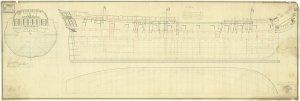
Lines & Profile (ZAZ2277)
Class and type: 40-gun frigate
Displacement: 1400 tons (French)
Tons burthen: 1238 67⁄94
Length: 48.7 m (160 ft);
Beam: 12.2 m (40 ft)
Draught: 5.1 m (17 ft)
Complement:
French service
Pomone was built to a one-off design by Baron Charles-Etienne Bombelle. After her capture, her design inspired that of the Royal Navy's Endymion-class frigates.
Between 17 February and 28 August 1793, Pomone was stationed at Rochefort under the command of captain de vaisseau Dumoutier. She cruised along the coasts of the Vendéeand then arrived at Brest. Dumoutier continued in command in late September. From 26 February 1794 Pomone was at Cherbourg under the command of lieutenant de vaisseauÉtienne Pévrieu. He sailed her from Cancale.
The British captured her, along with Babet and Engageante, off the Île de Batz during the Action of 23 April 1794.
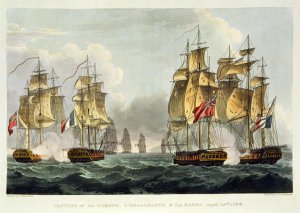
Capture of Pomone, Engageante and Babet
British service
She was recommissioned in the Royal Navy as HMS Pomone and the Endymion-class frigates were built to her same lines, but by the British practice of fastening.
The Endymion-class was a class of six Royal Navy 40-gun fifth-rate frigates, with the prototype launched in 1797 and five slightly amended versions built of fir launched from 1813 to 1814.

Scale: 1:48. Plan showing the body plan, sheer lines, and longitudinal half-breadth for Liffey (1813), Forth (1813), Severn (1813), Liverpool (1814), and Glasgow (1814), all fir-built 40-gun Fifth Rate Frigates to be built at Blackwall by Wigram, Wells & Green. The plan records that the body was similar to that of Endymion (1797), a 40-gun Fourth Rate Frigate.
Design
In 1794, a frigate squadron under the command of Captain Sir John Borlase Warren captured the French 40-gun frigate Pomone. Surprisingly to her captors, the ship was armed with 26 × 24-pounder long guns, a main armament that was relatively uncommon for frigates in the 18th century. Furthermore, the Pomone impressed the British with outstanding sailing qualities in every variation of the wind, and being capable of sailing more than 13 knots.
On 30 April 1795, the Admiralty ordered three frigates — with 36 guns, 38 guns and 40 guns — the first and third built to the lines of the captured French frigate and the second to a new design by the Surveyors (the ship designers of the Royal Navy). The 40-gun French design was copied from the Pomone, and in November 1795 the keel was laid down at the Rotherhithe shipyard of John Randall & Company for the new ship, which on 14 November 1795 was named as the HMS Endymion. She was launched on 29 March 1797 and towed to Deptford Dockyard, where she was commissioned in April 1797 and completed on 12 June 1797.
The Endymion was not an exact copy of the Pomone, being built to British design standards with stronger construction. Surprisingly, Endymion sailed even better than Pomone, reaching 14.4 knots, the highest recorded speed during the Age of Sail. Reclassified as a 48-gun fourth-rate frigate in February 1817, then as 50-gun, and finally as 44-gun in February 1839, Endymion's fine qualities were such that she continued to be praised for nearly half a century. She was finally broken up at Plymouth Dockyard in June 1868.
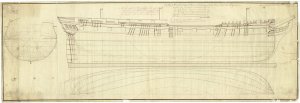
A draught for building a frigate.Each plan of the set ZAZ224-30 are in good condition and accommodation, ladders, portholes etc are all well marked. Made by Messrs Randall, Brent and Sons, Rotherhithe, for the Admiralty.
The 1812 Programme
Early in 1812, war with the United States seemed inevitable. To cope with the heavy American 24-pounder frigates of the Constitution-type, the Admiralty decided to build a batch of new 24-pounder frigates. During the long war with France, the standard British frigate was of about 1000 tons and armed with a main battery of only 18-pounders, no match for the big US ships. The only proven design for a suitable 24-pounder frigate was that of Endymion, and in May 1812 two ships were ordered from Wigram, Wells & Green of Blackwall Yard, who were to construct all five ships eventually built. They differed from the prototype by being constructed of "fir" (actually, pitch pine) rather than oak, and mounted an extra (fourteenth) pair of 24-pounder guns on the upper deck forward. All would be reclassified as 50-gun fourth-rate frigates in February 1817; however, the use of softwood in their construction was such that they were only intended for a short lifetime, and indeed all five were taken to pieces after a few years' service.
The first pair were originally ordered on 4 May 1812 as the Tagus and Eridanus of the 18-pounder armed Leda class, but were renamed on 7 January 1813 as the Severn and the Liffey. The War broke out in June, and on 26 December two further ships were ordered, becoming the Glasgow and Liverpool. The final ship was the Forth, ordered on 7 January 1813. These five new ships were of a slightly modified design, having ports for 28 instead of 26 × 24-pounders and were built of softwood, to speed up the construction. The ships were launched from June 1813 to February 1814.
Principal characteristics
There were small variations in the dimensions of the different ships:
Type: 40-gun fifth-rates, rerated as 50-gun fourth-rates in 1817
Tons burthen: 1,468 11/94 (as designed)
Length: 159 ft 2 in (48.51 m) on gundeck
Beam: 41 ft 2 in (12.55 m)
Draught: 12 ft 4 in (3.76 m)
Speed: 14.4 knots (16.6 mph; 26.7 km/h)
Complement: 300 (later 340)
Armament:
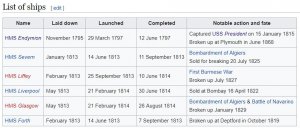

Frame plan of Ship Endymion. Made by Messrs Randall, Brent and Sons, Rotherhithe, for the Admiralty.
https://en.wikipedia.org/wiki/French_frigate_Pomone_(1787)
https://en.wikipedia.org/wiki/Endymion-class_frigate
http://collections.rmg.co.uk/collec...el-310436;browseBy=vessel;vesselFacetLetter=E
5 January 1798 - HMS Pomone (44), Cptn. Robert Carthew Reynolds, sank privateer Cheri (26), Cptn. Chassin, off Ushant
On 5 January, HMS Pomone was 94 leagues off Ushant when she encountered a large ship which she pursued. In the haze, the quarry underestimated Pomone's size and armament and opened fire. The two vessels exchanged several broadsides before the quarry struck. She was the French privateer Chéri, from Nantes, and was armed with a mix of twenty-six 12, 18 and 24-pounder guns. She had a crew of 230 men under the command of Mons. Chaffin. The engagement cost Pomone one man killed and four wounded, plus damage to masts and rigging. Chéri had 12 men killed and 22 wounded, and had lost her mizzen mast and all sails, and had taken several holes to her hull as well. Reynolds took her in tow and sent over his carpenter to plug the holes when she started to sink. He sent over Pomone's boats and they were able to get everyone off Chéri, including the wounded, before she sank.
Pomone was a 40-gun frigate of the French Navy, launched in 1785. The British captured her off the Île de Batz in April 1794 and incorporated her into the Royal Navy. HMS Pomone subsequently had a relatively brief but active career in the British Navy off the Atlantic and Mediterranean coasts of France before suffering sufficient damage from hitting a rock to warrant being taken out of service and then broken up in 1803.

Lines & Profile (ZAZ2277)
Class and type: 40-gun frigate
Displacement: 1400 tons (French)
Tons burthen: 1238 67⁄94
Length: 48.7 m (160 ft);
Beam: 12.2 m (40 ft)
Draught: 5.1 m (17 ft)
Complement:
- French service: 325
- British service: 300
- French service:
- Battery: 26 (later 28) × 18-pounders
- Battery at capture: 26 × 24-pounder guns
- Forecastle and quarterdeck: 6 (1794 - 12) × 8-pounder guns and 4 × 36-pounder obusiers
- British service:
- Battery: 26 × 24-pounder guns
- Battery 1799: 26 × 18-pounder guns
- Fc: 4 × 32-pounders + 2 × 9-pounder guns
- QD:14 × 32-pounders
French service
Pomone was built to a one-off design by Baron Charles-Etienne Bombelle. After her capture, her design inspired that of the Royal Navy's Endymion-class frigates.
Between 17 February and 28 August 1793, Pomone was stationed at Rochefort under the command of captain de vaisseau Dumoutier. She cruised along the coasts of the Vendéeand then arrived at Brest. Dumoutier continued in command in late September. From 26 February 1794 Pomone was at Cherbourg under the command of lieutenant de vaisseauÉtienne Pévrieu. He sailed her from Cancale.
The British captured her, along with Babet and Engageante, off the Île de Batz during the Action of 23 April 1794.

Capture of Pomone, Engageante and Babet
British service
She was recommissioned in the Royal Navy as HMS Pomone and the Endymion-class frigates were built to her same lines, but by the British practice of fastening.
The Endymion-class was a class of six Royal Navy 40-gun fifth-rate frigates, with the prototype launched in 1797 and five slightly amended versions built of fir launched from 1813 to 1814.

Scale: 1:48. Plan showing the body plan, sheer lines, and longitudinal half-breadth for Liffey (1813), Forth (1813), Severn (1813), Liverpool (1814), and Glasgow (1814), all fir-built 40-gun Fifth Rate Frigates to be built at Blackwall by Wigram, Wells & Green. The plan records that the body was similar to that of Endymion (1797), a 40-gun Fourth Rate Frigate.
Design
In 1794, a frigate squadron under the command of Captain Sir John Borlase Warren captured the French 40-gun frigate Pomone. Surprisingly to her captors, the ship was armed with 26 × 24-pounder long guns, a main armament that was relatively uncommon for frigates in the 18th century. Furthermore, the Pomone impressed the British with outstanding sailing qualities in every variation of the wind, and being capable of sailing more than 13 knots.
On 30 April 1795, the Admiralty ordered three frigates — with 36 guns, 38 guns and 40 guns — the first and third built to the lines of the captured French frigate and the second to a new design by the Surveyors (the ship designers of the Royal Navy). The 40-gun French design was copied from the Pomone, and in November 1795 the keel was laid down at the Rotherhithe shipyard of John Randall & Company for the new ship, which on 14 November 1795 was named as the HMS Endymion. She was launched on 29 March 1797 and towed to Deptford Dockyard, where she was commissioned in April 1797 and completed on 12 June 1797.
The Endymion was not an exact copy of the Pomone, being built to British design standards with stronger construction. Surprisingly, Endymion sailed even better than Pomone, reaching 14.4 knots, the highest recorded speed during the Age of Sail. Reclassified as a 48-gun fourth-rate frigate in February 1817, then as 50-gun, and finally as 44-gun in February 1839, Endymion's fine qualities were such that she continued to be praised for nearly half a century. She was finally broken up at Plymouth Dockyard in June 1868.

A draught for building a frigate.Each plan of the set ZAZ224-30 are in good condition and accommodation, ladders, portholes etc are all well marked. Made by Messrs Randall, Brent and Sons, Rotherhithe, for the Admiralty.
The 1812 Programme
Early in 1812, war with the United States seemed inevitable. To cope with the heavy American 24-pounder frigates of the Constitution-type, the Admiralty decided to build a batch of new 24-pounder frigates. During the long war with France, the standard British frigate was of about 1000 tons and armed with a main battery of only 18-pounders, no match for the big US ships. The only proven design for a suitable 24-pounder frigate was that of Endymion, and in May 1812 two ships were ordered from Wigram, Wells & Green of Blackwall Yard, who were to construct all five ships eventually built. They differed from the prototype by being constructed of "fir" (actually, pitch pine) rather than oak, and mounted an extra (fourteenth) pair of 24-pounder guns on the upper deck forward. All would be reclassified as 50-gun fourth-rate frigates in February 1817; however, the use of softwood in their construction was such that they were only intended for a short lifetime, and indeed all five were taken to pieces after a few years' service.
The first pair were originally ordered on 4 May 1812 as the Tagus and Eridanus of the 18-pounder armed Leda class, but were renamed on 7 January 1813 as the Severn and the Liffey. The War broke out in June, and on 26 December two further ships were ordered, becoming the Glasgow and Liverpool. The final ship was the Forth, ordered on 7 January 1813. These five new ships were of a slightly modified design, having ports for 28 instead of 26 × 24-pounders and were built of softwood, to speed up the construction. The ships were launched from June 1813 to February 1814.
Principal characteristics
There were small variations in the dimensions of the different ships:
Type: 40-gun fifth-rates, rerated as 50-gun fourth-rates in 1817
Tons burthen: 1,468 11/94 (as designed)
Length: 159 ft 2 in (48.51 m) on gundeck
Beam: 41 ft 2 in (12.55 m)
Draught: 12 ft 4 in (3.76 m)
Speed: 14.4 knots (16.6 mph; 26.7 km/h)
Complement: 300 (later 340)
Armament:
- UD: 26 × 24-pounder guns
- 28 x 24-pounder guns
- QD: 14 (later 16) × 32-pounder carronades
- FC: 2 × 9-pounder guns and 4 × 32-pounder carronades


Frame plan of Ship Endymion. Made by Messrs Randall, Brent and Sons, Rotherhithe, for the Admiralty.
https://en.wikipedia.org/wiki/French_frigate_Pomone_(1787)
https://en.wikipedia.org/wiki/Endymion-class_frigate
http://collections.rmg.co.uk/collec...el-310436;browseBy=vessel;vesselFacetLetter=E




